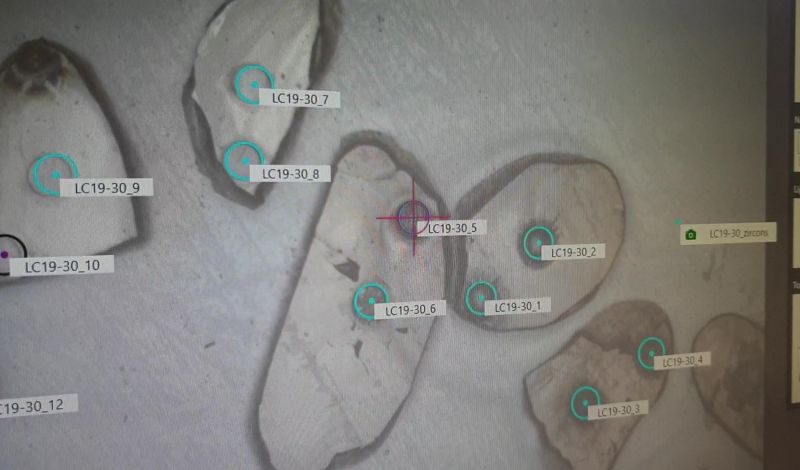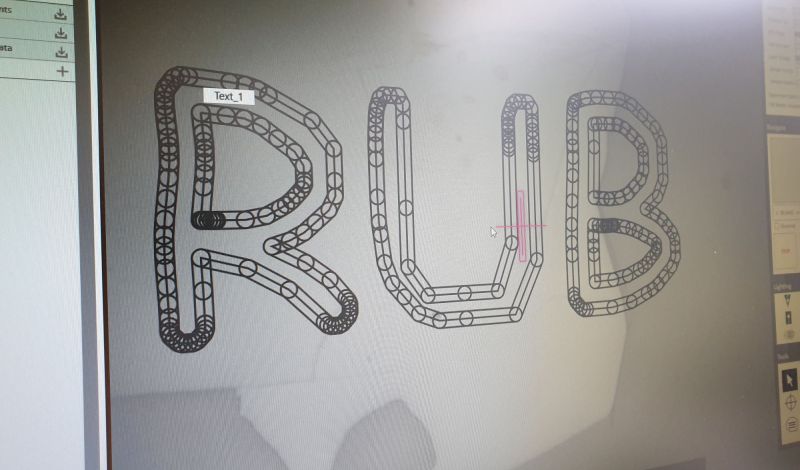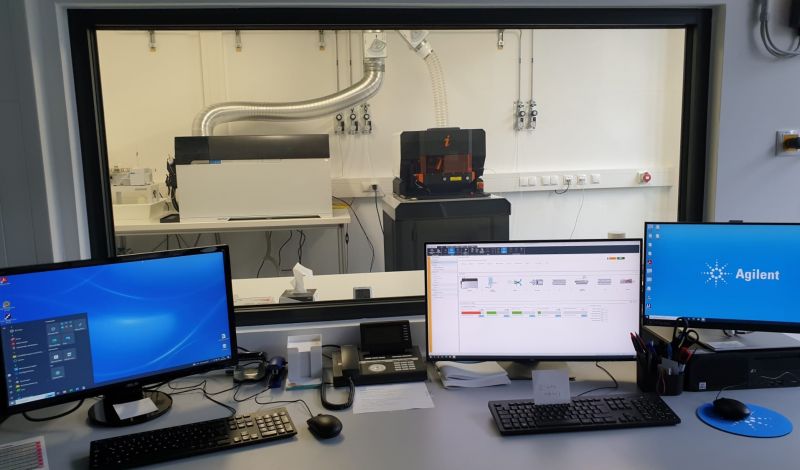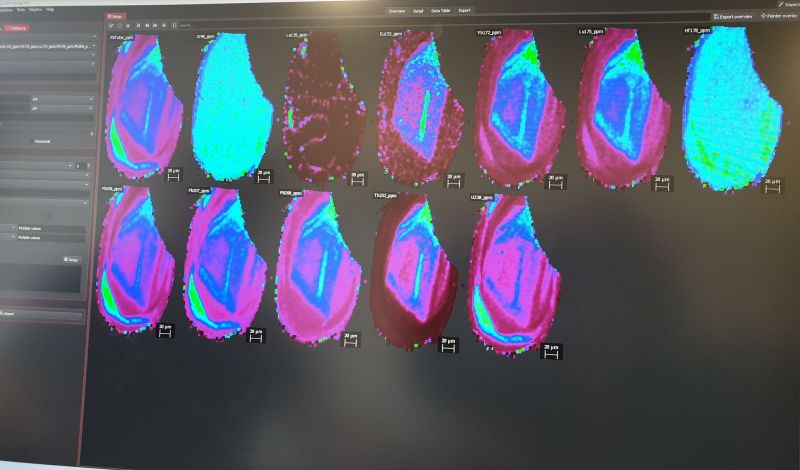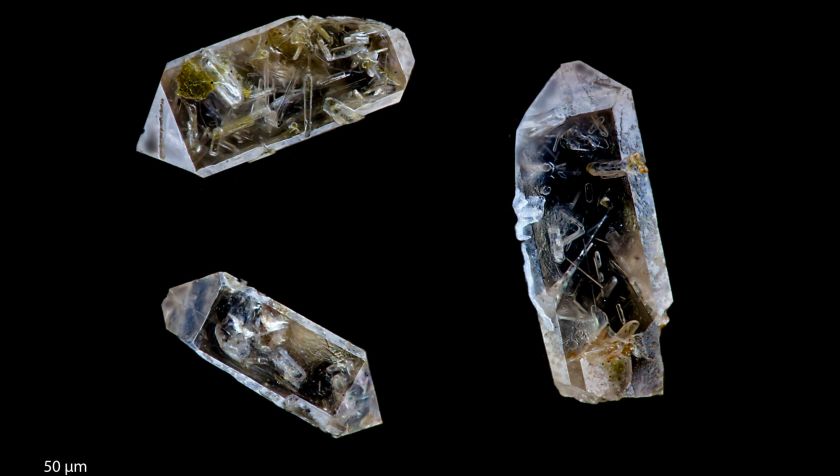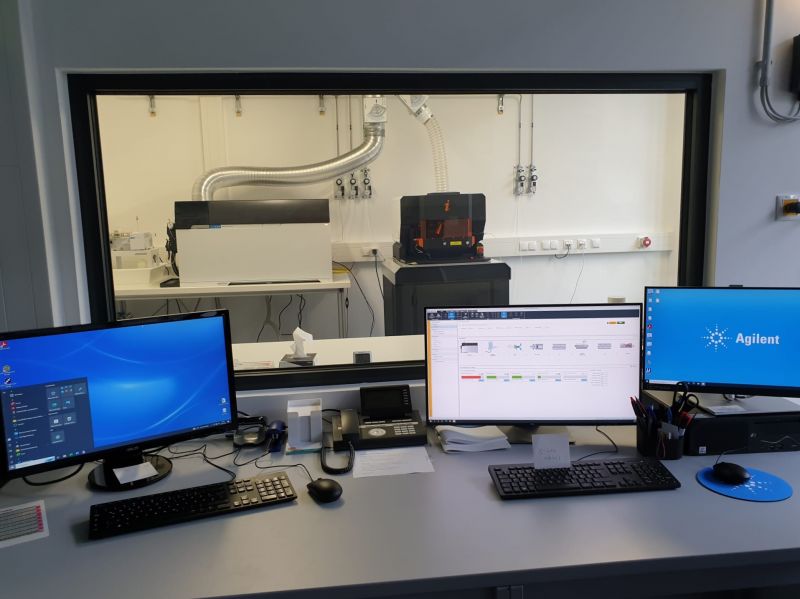
Laboratories of Tectonics and Resources
The laboratories of the Chair of Tectonics and Resources are used, among other things, for mineral separation as well as preparation and thin section examinations. Currently under construction is also a LA-ICP-MS laboratory, in which, in addition to trace element analyses on solids, U-Pb dating of e.g. zircons is carried out. Analyses of acidified aqueous samples are also possible.
The laboratories
Microscopy Laboratory
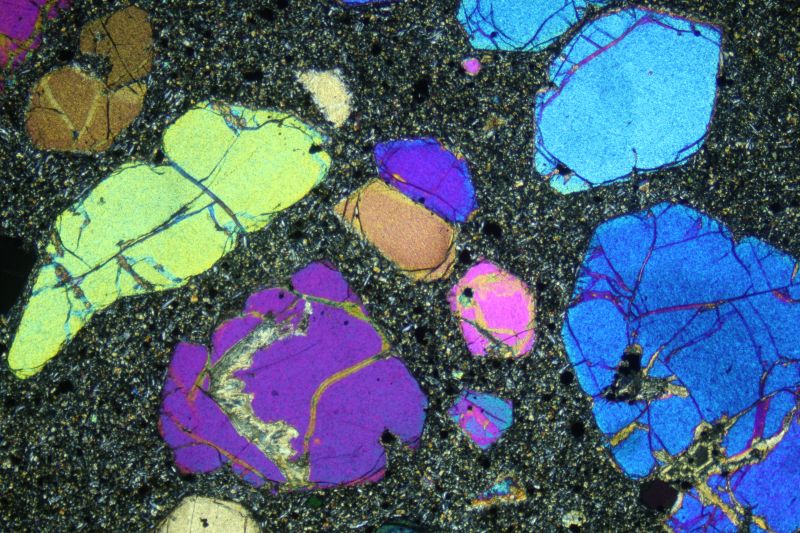
Mikroscopy Laboratory
Various polarizing microscopes from Leica (DM750P) and Olympus are available for preparation and thin section microscopy. A Euromex HD-Lite camera with Image Focus software is used for real-time image generation and preparation of micrographs and thin sections. The DM750P polarizing microscopes feature 4x object turrets (with 4x, 10x, 20x, 50x magnification), LED illumination, incident and transmitted light modules, and a Bertrand lens module.
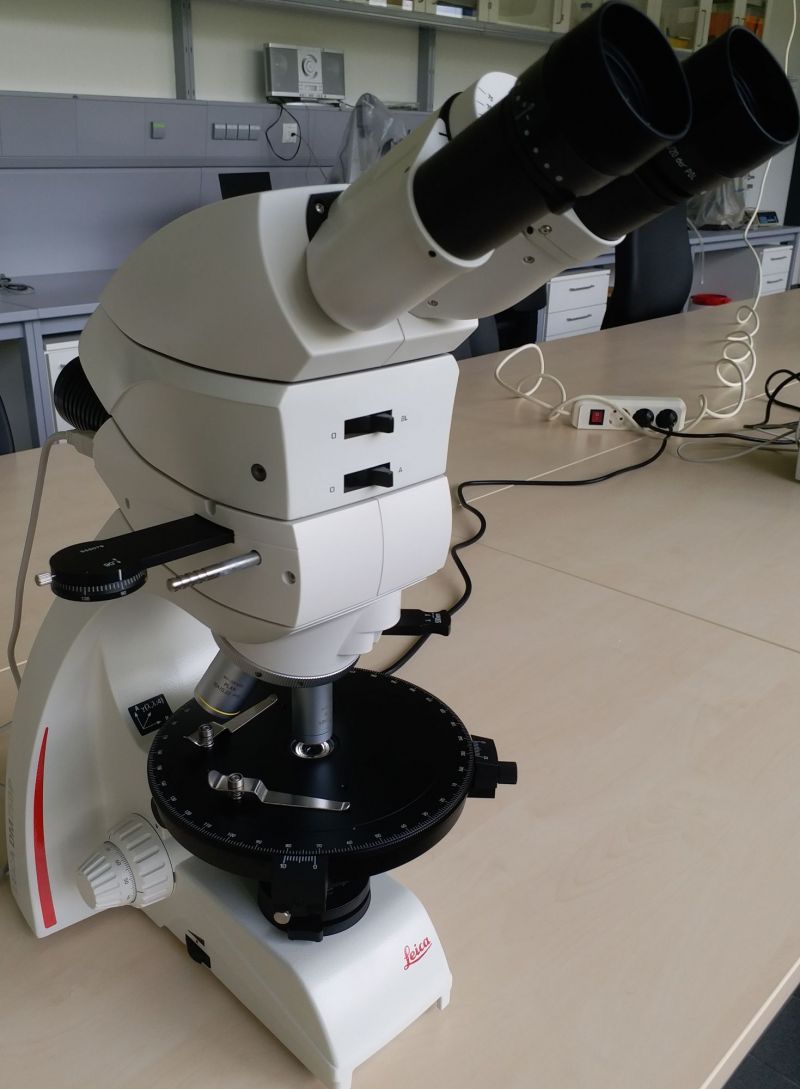
Room: IA 01/175
Contact: Prof. Dziggel (IA 4/185, Tel.: +49 (0)234-32-27 25 4)C
Rock processing
The rock processing uses various devices to crush rock samples to the desired size. In addition, mineral phases can be separated from each other using a Wilfley table.
Room IA 02/65
Contact: F. Hansen (IA 01/165, Tel.: +49 (0)234-32-23 44 2)
Fine preparation and wet chemistry laboratory
Fine preparation uses various methods to prepare samples for analysis: mineral separation using magnetic separators, super panners and heavy liquid separation, and the oscillating disk mill for sample pulverization.
Room IA 01/67
Contact: F. Hansen (IA 01/165, Tel.: +49 (0)234-32-23 44 2)
Picking room
The final production of the mineral separates is done by hand picking ("picking") under the binocular.
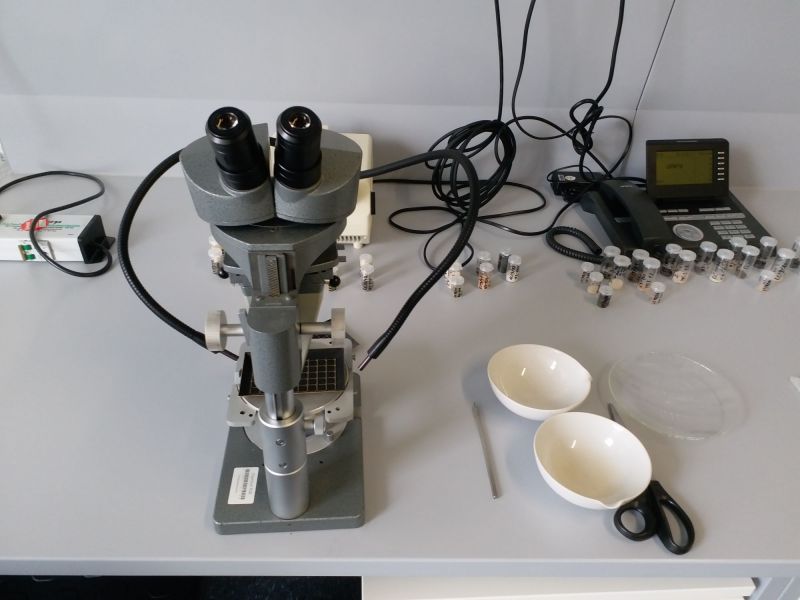
Room IA 01/69
Contact: F. Hansen (IA 01/165, Tel.: +49 (0)234-32-23 44 2)
LA-ICP-MS-Labor
LA-ICP-MS-Labor
Das Labor zur Probenanalyse mittels Kopplung eines Lasers mit einem Massenspektrometer nutzt ein Agilent 8900 Tripel-Quadrupol-Massenspektrometer mit eingebauter Reaktionszelle (verwendet werden aktuell Helium, Ammoniak, und Sauerstoff) und induktiv gekoppeltem Plasma als Ionenquelle (TQ-ICP-MS bzw. QQQ-ICP-MS).
Als Laser wird ein ESI NWRImageGEO genutzt. Es handelt sich um einen ArF-Excimer-Laser mit einer Wellenlänge von 193 nm, einer Pulslänge von 5 ns, und einer Energiedichte von ~15 J/cm² (Hersteller der Laser-Quelle: Coherent). Punktanalysen von 2 bis 220 µm, Linien-, Raster- und Rechteck-Analysen in beliebiger Orientierung mit einer Diagonale von bis zu 100 µm sind möglich. Die Ablationsrate kann zwischen 1 bis 300 Hz gewählt werden.
Laser und TQ-ICP-MS ermöglichen somit die Analyse von festen (nicht gefrohrenen) Proben mit hoher Ortsauflösung. Bildgebende Konzentrationsverteilungen an Oberflächen ("element mapping") sind durch das vorhandene DCI-System zur Kopplung zwischen Laser und ICP-MS und die Auswertung mit Hilfe der Iolite-Software ebenfalls problemlos möglich (kleinstes Pixel entspricht 2 µm).
Lösungen können über den angeschlossenen Autosampler mit dem TQ-ICP-MS außerdem gemessen werden.
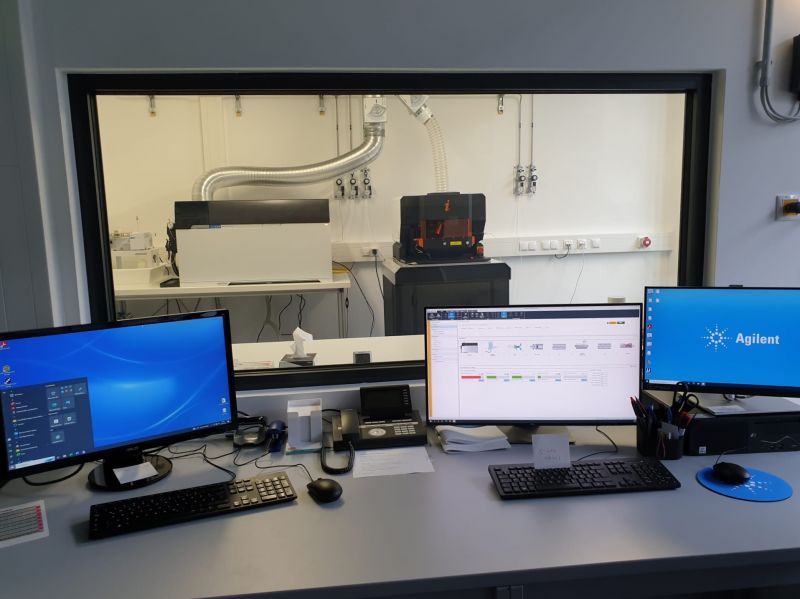
Räume IA 01/73-75-77
Kontakt: Dr. S. Schuth (IA 4/53, Tel.: +49 (0)234 32 23 23 5)
The new LA-ICP-MS laboratory
